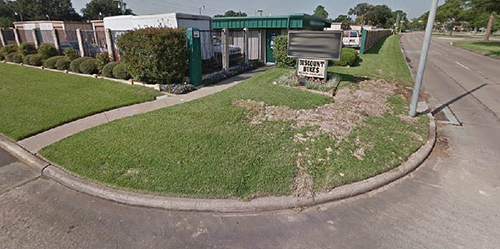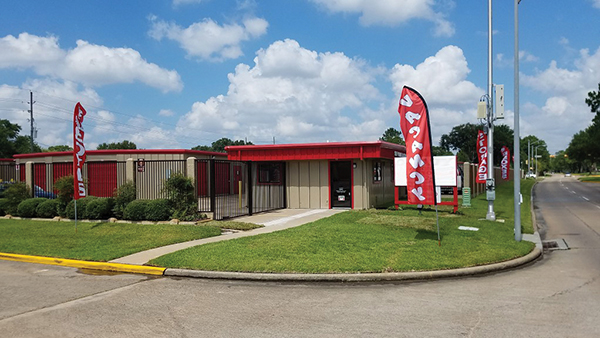When John Manes, CEO of Pinnacle Storage Properties, talks about the self-storage business, he gets directly to the point:
“We buy under-managed, under-enhanced, and under-expanded self-storage facilities. We go in and fix them up, increase value through revenue management strategies, do expansions when the market demands it, and take a class C property to a class A one.”
Manes and his business partners, Robby Dunn and Erik Osterhus, all specialized in turning distressed assets into high-performing ones in other real estate sectors before entering the self-storage sector full-time. They also all were involved in residential real estate investing. “We all owned single-family; we all owned multifamily, and now we all own storage. If you ask any of us, we would never go back to single-family investing!” Manes said.
Think Realty sat down with Manes to discuss how his company and preferred investment vehicle are evolving in today’s real estate market.
Think Realty: Most investors have seen self-storage facilities but have no idea they can be a great asset vehicle. Can you explain how the investment strategy works?

John Manes
CEO, Pinnacle Storage Properties
I like to think of self-storage investing as being like buying a cup of coffee at the local run-down gas station. You walk into that dirty gas station and buy a cup of coffee – and you can buy it cheap for 69 cents. Then, you take that same cup of coffee down to your designer coffee bar, put it in a nice cup and add the right ambience like leather sofas, Wi-Fi and a cool logo, and you can then sell it for five dollars. People pay for the experience and to be part of the “cool kids’ club.” At Pinnacle, we take the storage unit that is a “69-cent one,” fix it all up, make it “pretty” with all new colors and new office remodel, lights, camera, gates, HVAC, etc., and then we sell it at the “five-dollar” level because people are willing to pay for a better experience, as they should be!
Here’s an example of a facility where we did exactly that:
We own a property in Katy, Texas, that is 1.5 acres, has 330 spaces, and the drive aisles are 25 feet wide, which means you cannot get a tractor trailer on the property.
Some investors might have thought this wasn’t a good investment because they would need to widen the aisles to make it accessible to those big trucks, but we saw a good opportunity and we went for it without having to make that huge adjustment.
Now that we own and manage the facility, that property has 18 cameras, an electronic gate, all brand-new HVAC systems, and is all concrete instead of gravel drives.
When we bought the facility, it was fully occupied but had not changed its rates in six years, did not have late fees, did not require customer insurance, and did not have an administrative fee. All of those things are standard in the business and are nothing less than responsible business practice. When we bought the property 16 months ago, it was bringing in $19,000 a month. Now it is bringing in $29,000 a month. That means we paid $1.8 million for it and now it is worth $3.4 million.

Building before renovation
Think Realty: What do real estate investors need to know about self-storage investing before they get started?
First, storage is a low-risk asset. In fact, only about 8 percent of storage units go into foreclosure ever year – and only 2 percent go into foreclosure in the state of Texas. Storage is highly recession-resistant because in a good economy, people have a lot of stuff and need to store it. In a weaker economy, people need a place to put their stuff when they have to downsize. The risk profile is just a lot less than in other commercial or residential assets in our experience.
Second, your first storage deal should be done with an experienced partner. Find someone who knows how to operate these things, knows the marketing and revenue aspects, and knows what vendors to use in the industry. There are a lot of moving parts to this that new investors usually do not have the connections for and know nothing about.
Third, make sure you know all your exit options and pick the best one. Most investors are familiar with the idea of buying at a discount, adding value and forcing appreciation, then selling for a profit. With storage, however, one option is you can collect a bunch of those facilities that you added value to, bundle them together, then sell them off to a really big player in the industry for exponentially higher profits than if you operate on a one-off basis. Public and private real estate investment trusts (REITs), for example, are willing to pay more for an asset and may spend $50 million or $100 million at a shot, which makes the additional work involved in building a ready-made portfolio of these assets for them entirely worth it. In the end that means more profit for you and your investors.
Think Realty: Is that third strategy a common one in the industry?
Not at all. Most investors end up buying a mom-and-pop storage facility and then continuing to run it as a mom-and-pop property. They add value, but then they keep operating it on that individual level. There are fewer than a dozen companies in the United States that are “middle traders,” like we are, that buy the mom-and-pop facilities, fix them up and enhance them, then put them in a package and sell them off to institutional investors.
Learn more about self-storage investment strategies and partnering with Pinnacle Storage Properties at PinnacleStorageProperties.com or by emailing info@pinnaclestorageproperties.com.























0 Comments